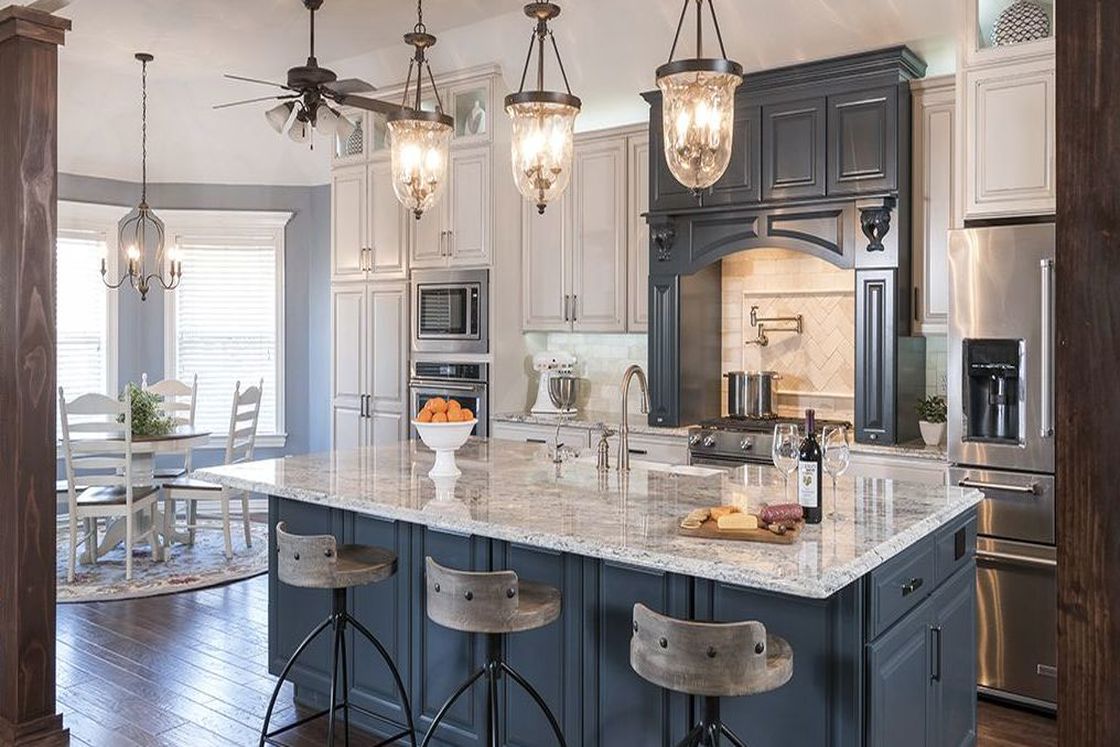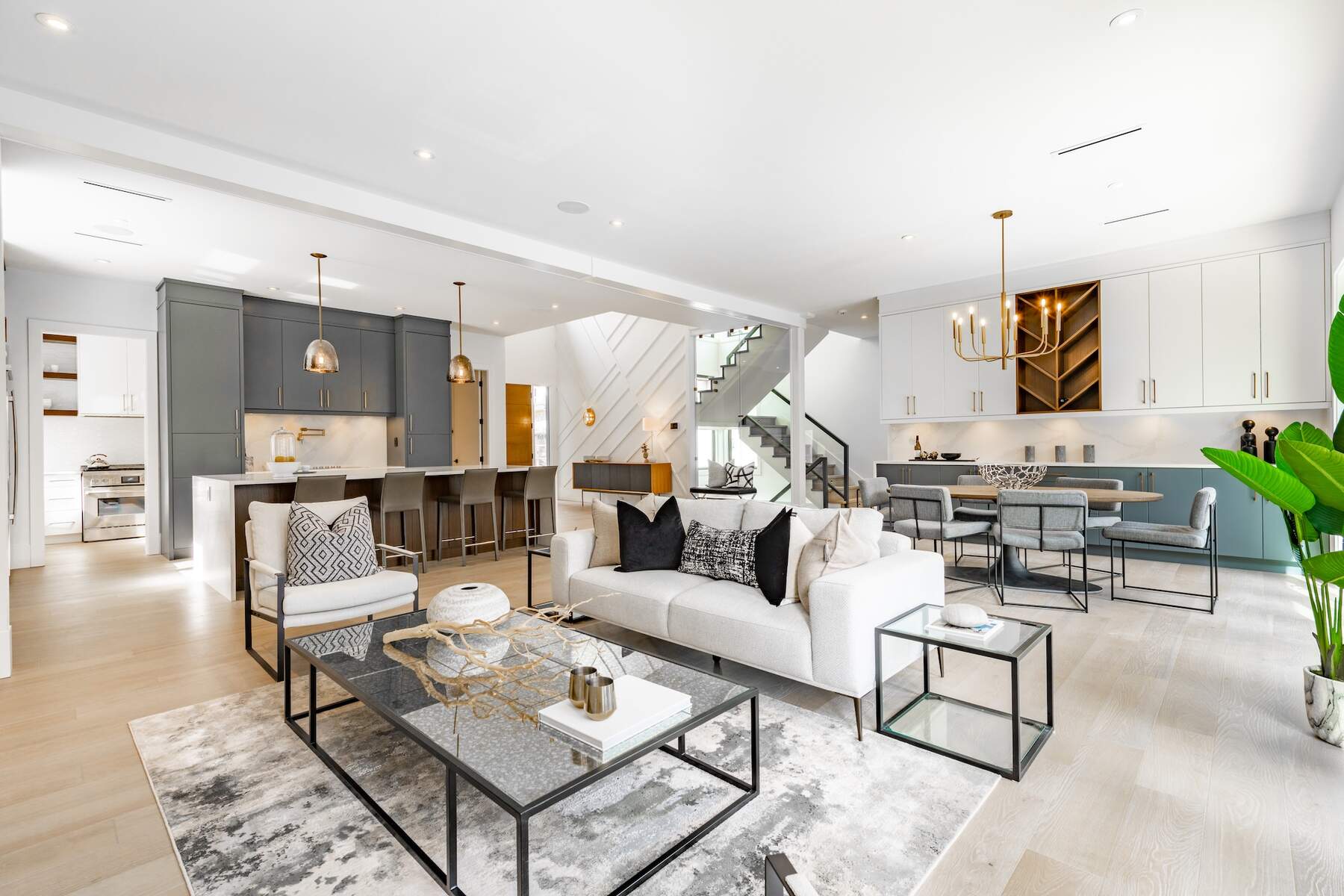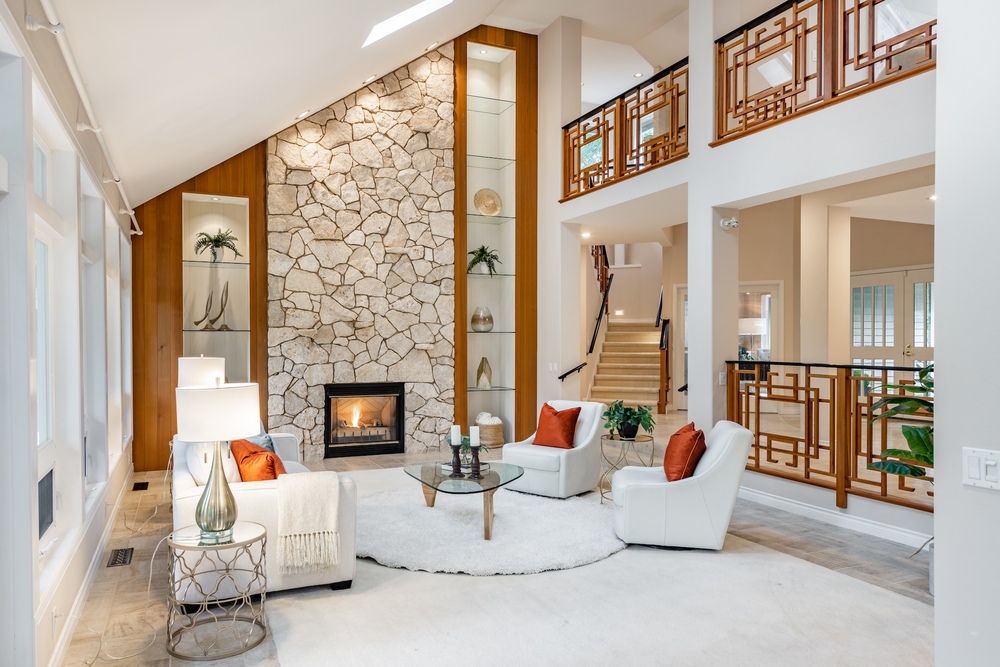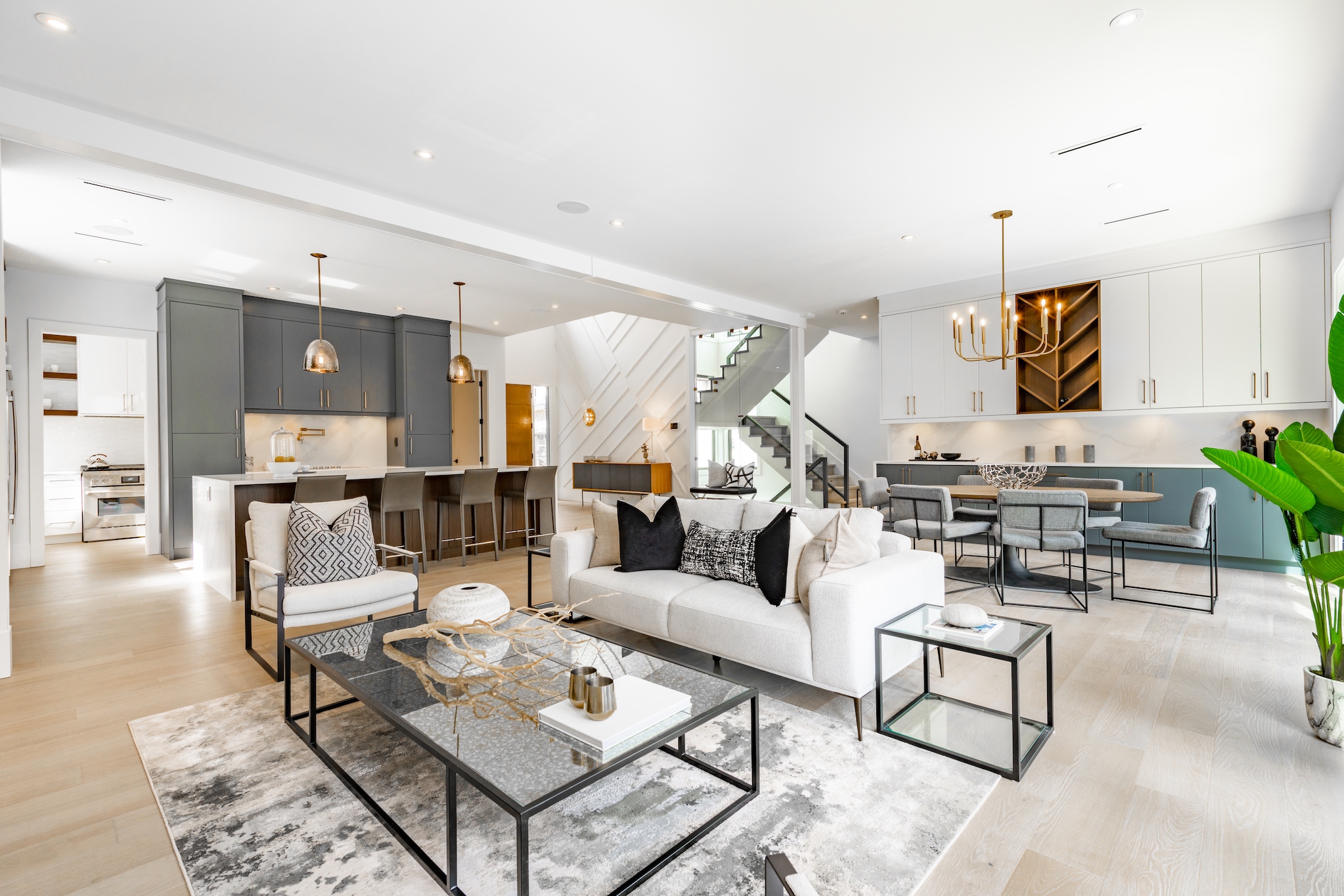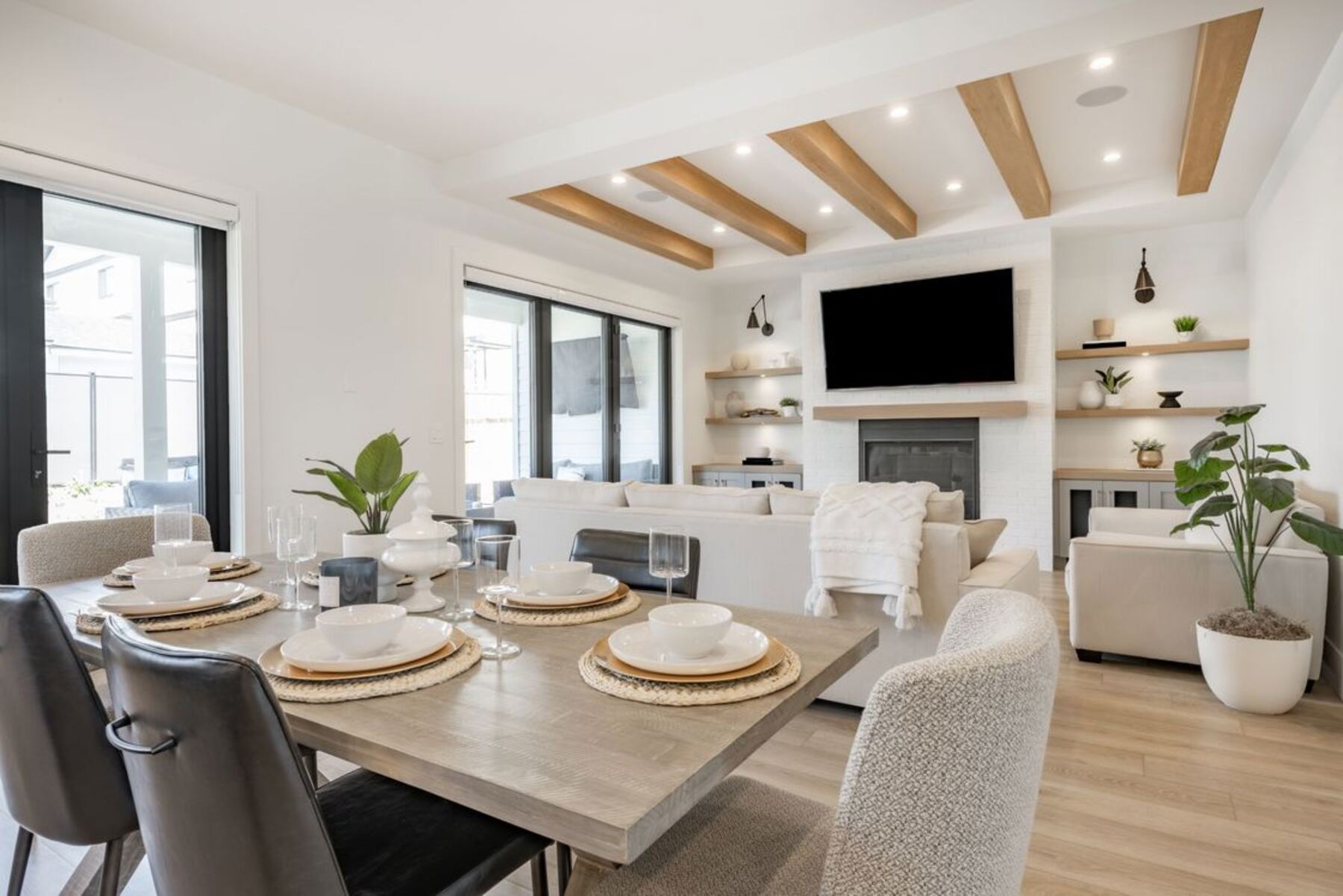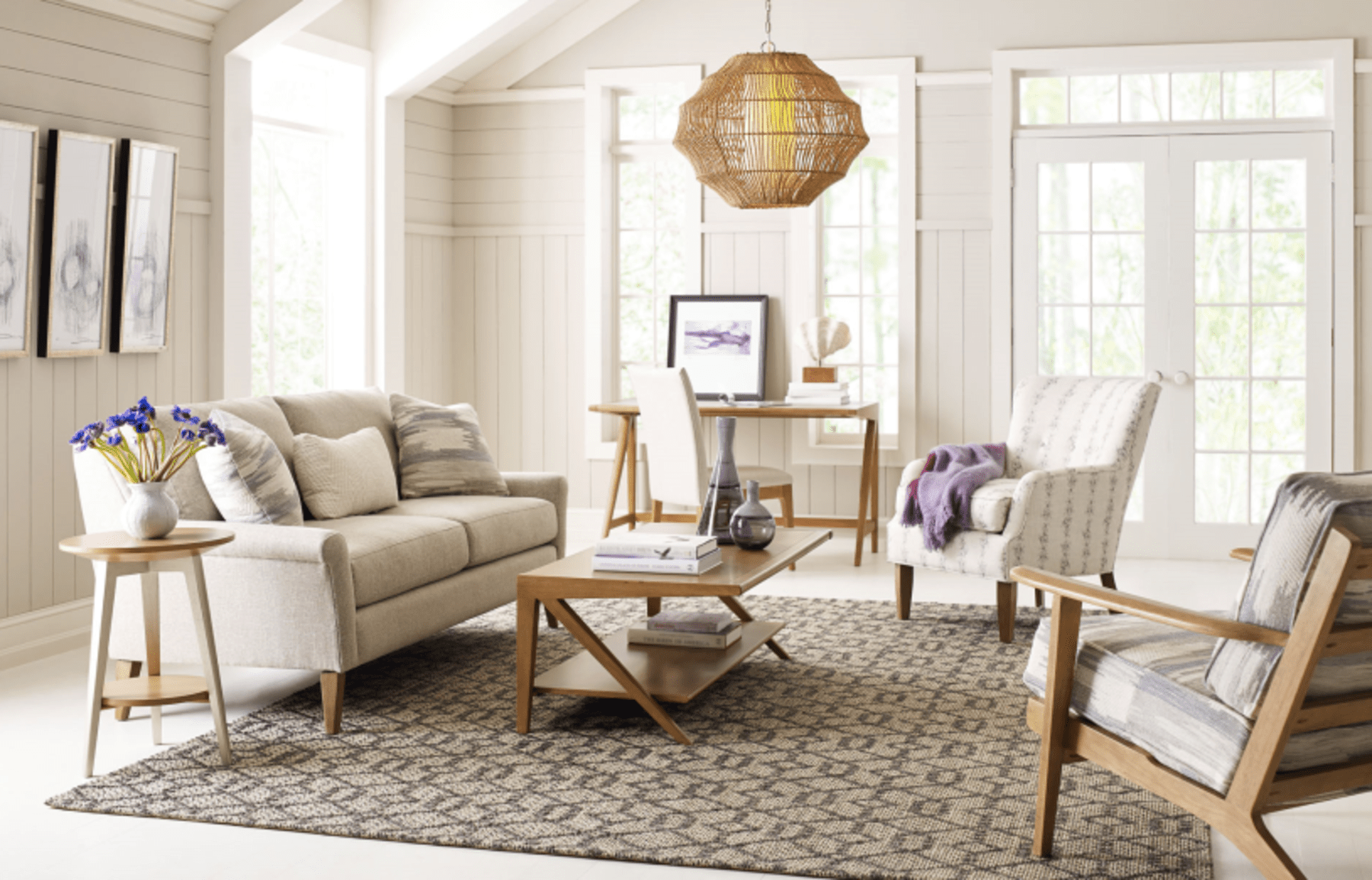Have you ever walked into a room and it feels “off?” More than likely, it has to do with the lighting. Bad lighting can completely disrupt the ambiance and functionality within spaces.
I’ve spent a lot of time learning how to use lights to set the right mood in a room and highlight important features, so I know how important lighting is in interior design.
Why is Lighting Important in Interior Design?
Quality lighting is essential for good interior design because it brings all the elements of a room together. The right lighting can emphasize good design features and downplay any flaws. More than just making a space bright, lighting sets the mood, makes a room usable, and enhances its appeal. It is one of the most important parts of interior design.
You can think of lighting like the perfect brushstroke on a painting – it highlights textures, finishes, and brings out the best in the room. Lighting creates an ambiance that impacts how people feel when they walk into a space.
The goal is to have the lighting fixtures blend in seamlessly with the decor. Whether it’s a softly glowing lamp or a sparkling chandelier, the lights should match the style of the room. The lighting doesn’t take away from the design, but improves it by making the space truly usable. Good lighting brings together aesthetics and function.
Unraveling Lighting’s Role in Interior Design
When it comes to design, lighting conducts the mood, shaping the narrative of a space. Lighting’s role in interior design is not just about visibility; it’s the maestro orchestrating ambiance and emphasizing the room’s essence. Yet, it’s a careful choreography, not a mere flick of a switch.
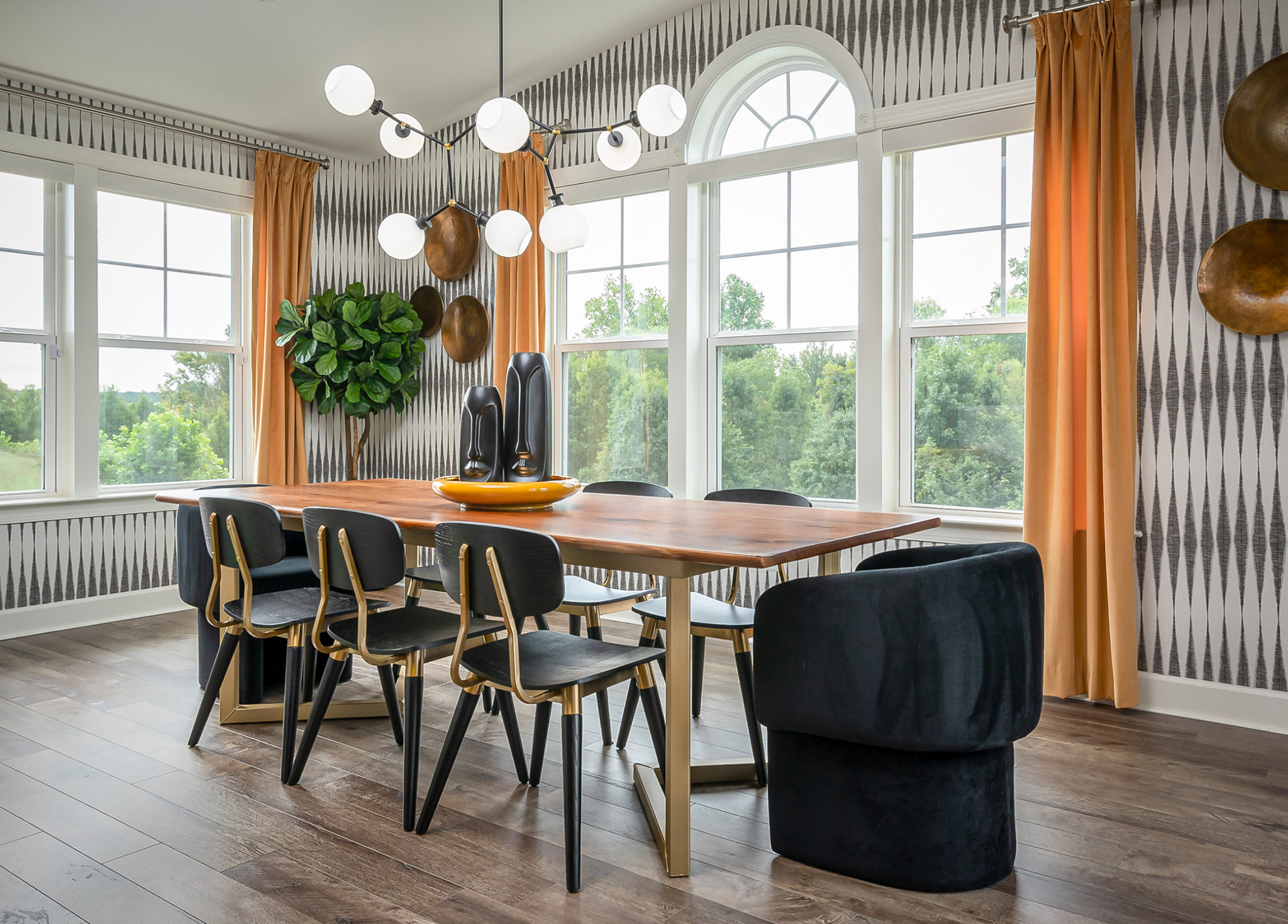
The impact of lighting is profound. A well-lit haven breathes expansiveness and warmth, extending an invitation to linger. Conversely, a dimly lit space can shrink and repel. Understanding this pivotal role of lighting is crucial in crafting captivating interiors that beckon and embrace.
Understanding the Dynamics of Lighting Science
The fascinating interplay between lighting and our psyche is a silent yet powerful force. It’s not just about illuminating a space; it’s about crafting emotional landscapes. Bright, crisp lighting sparks focus on an ally in the quest for concentration. On the flip side, the soft, subdued glow embraces us in tranquility, nudging us toward relaxation.
- Emotional Impact: Lighting goes beyond functionality, creating dynamic landscapes within spaces.
- Bright vs Soft Lighting: Brightness dictates focus, while softer lighting induces relaxation and calmness.
- Spectrum of Emotions: Warm hues offer tranquility, cool tones invigorate, each shade narrating a unique mood.
- Temperature Influence: Light temperatures (soft white to daylight) dictate emotional responses, affecting productivity.
- Designer’s Art: Understanding these nuances empowers designers to craft spaces that resonate with desired emotions and productivity levels.
Delving deeper, the temperature of light becomes the palette of our emotions. From the comforting warmth of soft white to the refreshing coolness of daylight, each hue wields its influence on our mood and productivity. This nuanced understanding empowers designers to choreograph the emotional symphony within our spaces.
Balancing Natural and Artificial Light
Balancing natural and artificial light sources is a delicate dance in interior design. Here’s a breakdown:
- Natural Light Benefits: It’s a powerhouse—providing vitamin D and aiding energy efficiency.
- Challenges of Natural Light: Its ever-changing angle and intensity demand strategic artificial lighting choices for a consistent ambiance.
Window treatments serve as key players in this balance:
- Sheer Curtains: Filtering natural light while maintaining its gentle presence within the room.
- Blackout Curtains: Total blockage for times when controlling natural light is essential.
- Blinds and Shades: Offering versatile control over the influx of natural light.
Understanding lighting’s impact on mood, exploring various lighting types, and mastering the equilibrium between natural and artificial sources result in spaces that transcend functionality—becoming aesthetically pleasing sanctuaries that beckon and embrace.

Unveiling Interior Design Lighting Types
Diverse lighting techniques in interior design serve as the virtuoso strokes in the canvas of interior design, sculpting atmospheres and purposes. Among these techniques, a few stand out prominently:
Overall Lighting in Interior Design
Lighting is the cornerstone of modern interior design, delivering functionality and visibility. It encompasses the primary light sources that uniformly illuminate and elevate rooms. These lights serve the fundamental purpose of brightening walls and surfaces and infusing vitality into spaces.
Primarily reliant on other lighting types to infuse vibrancy and depth, overall lighting is open to holding its ground when necessary. It’s often an amalgamation of existing fittings or purposefully created from scratch, ensuring rooms bask in a well-balanced, all-encompassing radiance.
Accent Lighting in Interior Design
It is the virtuoso touch in home design, a spotlight that elevates architectural marvels, intricate designs, or cherished decor elements. It’s the graceful pendant casting a radiant aura over a dining table, the focused beam accentuating an exquisite artwork, or the poised floor lamp lending prominence to a cherished piece of furniture.
When wielded precision, accent lighting catalyzes a design revolution within your interior. Its strategic placement and artful illumination have the power to transform mundane spaces into captivating realms of visual delight.
Task Lighting in Interior Design
Lighting, a functional backbone, enhances kitchen work and path guidance. Despite its practicality, the real artistry emerges when these functional lights transcend utility to captivate, adding depth and character to interior design’s realm.
The art lies in seamlessly integrating task lighting without it feeling overtly functional. When these lights discreetly serve their purposes without screaming their intent, they effortlessly merge into the ambiance. Blending them cohesively with the overall design elevates the space, turning the mundane into moments of visual appeal and harmonious functionality.

Lighting’s Influence on Color and Texture Dynamics
The interplay of color and lighting is pivotal in defining room aesthetics. Dark hues often confine spaces, inducing a sense of constriction, while lighter tones open up rooms, inviting warmth and expansiveness.
The Influence of Lighting on Color and Texture
- Significant Impact: Lighting can drastically alter the perception of colors and textures, either enhancing or detracting from their appeal within a room’s ambiance.
- Optimizing Furniture and Accents: Understanding lighting’s effect on furnishings and accents aids in maximizing a room’s color scheme and texture dynamics.
Enhancing Color Schemes with Lighting
- Tonal Enhancement: Cool-toned lighting accentuates blues and greens, while warm-toned lights amplify yellows, oranges, and reds, significantly impacting a room’s color palette.
- Considerations in Lighting Selection: Factors like light temperature and bulb type play pivotal roles in augmenting a room’s color scheme through lighting.
Creating Depth and Dimension with Light
- Depth Creation: Strategic lighting highlights specific areas, casting shadows and depths, contributing to a room’s visual dynamics.
- Dramatic Effects: Directional lighting adds depth and drama, emphasizing textures, shapes, and artworks within the space.
Highlighting Textures and Patterns
- Texture and Pattern Illumination: Lighting serves as a tool to showcase textures and patterns, directing accent lights to feature walls, creating shadow play, and emphasizing unique textures in fabrics or rugs.
Understanding how lighting interacts with colors and textures empowers designers and homeowners alike to craft visually compelling spaces that showcase the best aspects of their furnishings and decor.
Choosing the Perfect Light Fixtures for Your Space
The quest for the ideal light fixture in interior design isn’t just about functionality; it’s about ensuring it harmonizes with your room’s personality, enhancing its ambiance and aesthetic appeal. Here’s a comprehensive guide to navigating this selection process:
- Fixture Style and Room Design: The fixture’s style acts as an extension of your room’s design theme, harmonizing with its essence, whether modern, traditional, eclectic, or minimalist. Seamless integration of materials, colors, and shapes is key; a mismatched fixture can disrupt visual harmony, like an ornate chandelier in a sleek, minimalist space.
- Proportionality in Size and Placement: Fixture size matters for room balance. Oversized ones overwhelm; too small, they disappear. The chandelier size should match the table in dining areas, providing light without dominance. In living spaces, strategic placement maintains balanced, glare-free illumination.
- Exploration of Energy-Efficient Solutions: In today’s eco-conscious world, considering energy-efficient lighting options is paramount. LED lights, compact fluorescents, and smart lighting systems reduce energy consumption and offer versatile lighting options. These options provide excellent illumination while aligning with sustainability goals, ensuring a positive impact on the environment and utility bills.
- Functional Versatility: Assess the fixture’s adaptability beyond style and energy efficiency. Can it be dimmed for varying moods? Does it offer adjustable angles for directional lighting? Exploring fixtures that provide versatility in functionality ensures adaptability to different needs and occasions.
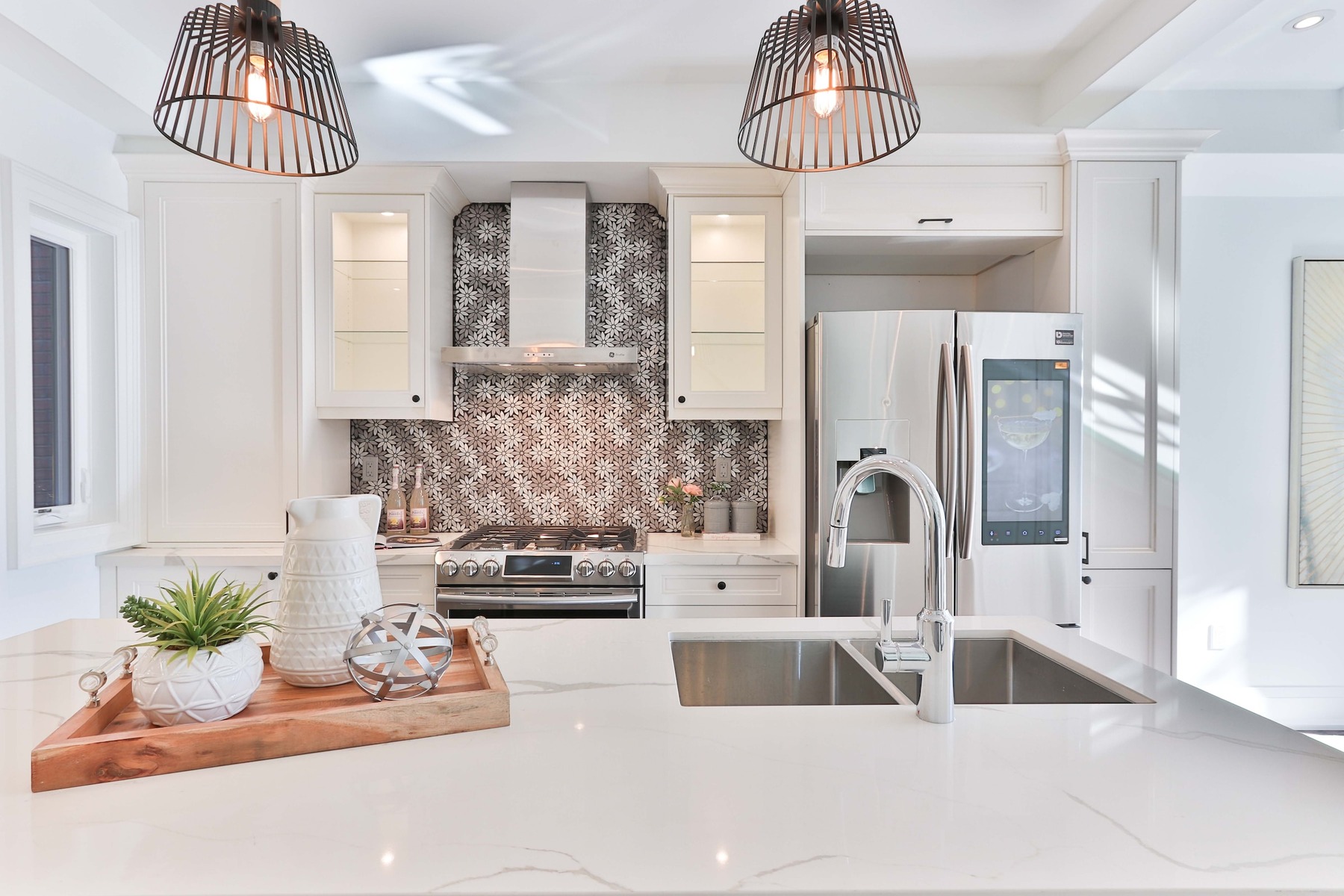
Choosing the right light fixture involves an intricate balance of aesthetics, proportion, functionality, and sustainability. A thoughtfully selected fixture isn’t just an illuminating element; it’s a design statement that seamlessly integrates into your space, enhancing its allure while aligning with modern eco-friendly principles.
Related Questions
Can Lighting Affect the Perceived Size of a Room?
Yes, strategic lighting techniques create illusions. Light tones and reflective surfaces expand smaller spaces; dark colors and opaque surfaces create intimacy in larger rooms.
How Does Lighting Emphasize Room Features?
The right lighting draws attention to architectural details, art, and furniture. Accent lights highlight artwork, while uplights showcase ceilings.
How Does Lighting Impact Safety and Health?
Inadequate lighting can cause accidents, eye strain, and headaches. Properly positioned, glare-free lighting is essential for safety and comfort in various activities at home.
Conclusion
In the realm of lighting and interior design, finding the perfect fixture is an art. When we offer interior design service in Vancouver British Columbia, we consider the room’s style, size, and energy efficiency. Ensure it complements while offering functionality. Remember, a well-chosen fixture isn’t just light; it’s the finishing touch to your space’s story.

